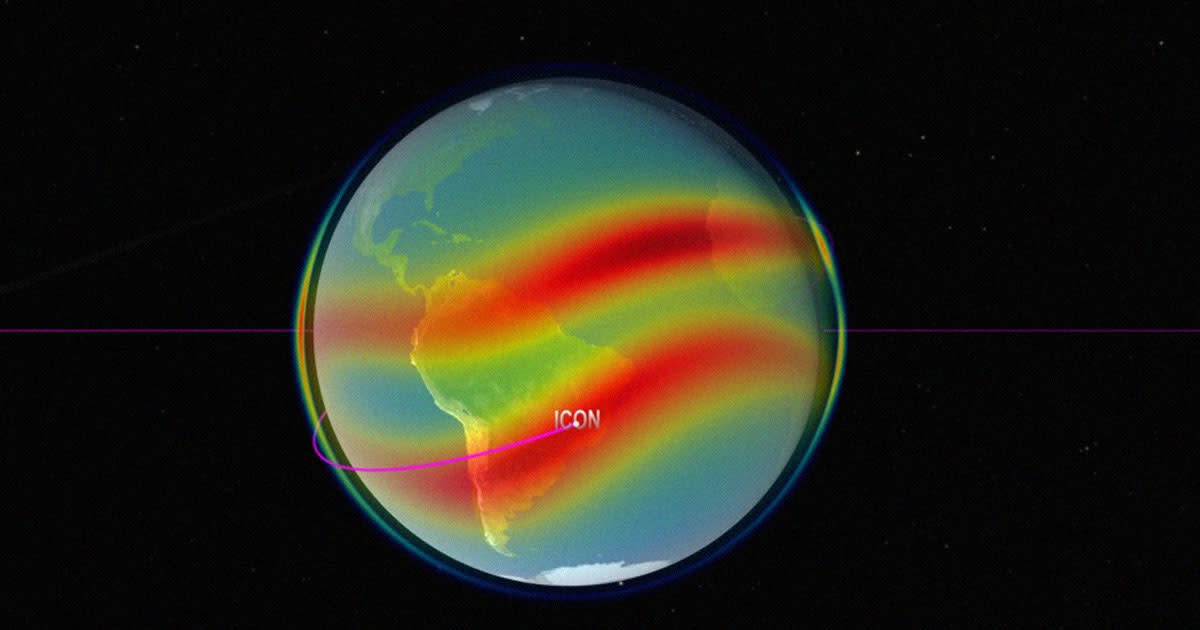NASA Discovers Strange Spectral Formations High Over the Earth

X Marks the Spot
NASA scientists have spotted unusual shapes in the Earth's ionosphere, hundreds of miles above the Earth's surface.
The ionosphere stretches from 50 to 400 miles above the planet and marks the boundary between our planet's atmosphere and outer space. While it houses most satellites orbiting the Earth, it's vulnerable to changes in space weather — electromagnetic radiation emitted by the Sun — that can wreak havoc in the zone and mess with communications equipment.
Under some conditions, the layer can become electrically charged. As detected by the Global-scale Observations of the Limb and Disk (GOLD) imaging instrument, plasma bands stretching across the ionosphere can result in formations of unusual X and C shapes.
It's a baffling "alphabet soup," as NASA termed the findings in a news release, that could shed light on how space weather can influence our planet's upper atmosphere and "interfere with radio and GPS signals."
Alphabet Soup
Charged particles can create dense bands or "crests" around the Earth's magnetic equator, while low density pockets caused by the setting Sun can result in "low-density pockets" called 'bubbles," according to NASA.
Scientists believe that larger disturbances such as solar storms or even massive volcanic eruptions can cause multiple crests to merge and form an "X" shape, as previous GOLD observations have shown.
But now, scientists have spotted these same shapes without any such occasion, during what scientists call "quiet time."
"Earlier reports of merging were only during geomagnetically disturbed conditions — it is an unexpected feature during geomagnetic quiet conditions," said University of Colorado research associate Fazlul Laskar, who lead-authored a paper on the discovery earlier this year, in a NASA statement.
Scientists are now wondering if something else could be causing these X shapes to appear.
"The X is odd because it implies that there are far more localized driving factors," said NASA scientist and ionosphere expert Jeffrey Klenzing. "This is expected during the extreme events, but seeing it during ‘quiet time’ suggests that the lower atmosphere activity is significantly driving the ionospheric structure."
Apart from X shapes, some bubbles in the ionosphere can also curve into C shapes, which new observations show can appear in close proximity to each other.
In short, there's a lot still to learn about our planet's magnetically charged, protective shell.
"The fact that we have very different shapes of bubbles this close together tells us that the dynamics of the atmosphere is more complex than we expected," Klenzing added.
More on the ionosphere: The Earth May Be Swimming Through Dark Matter, Scientists Say

